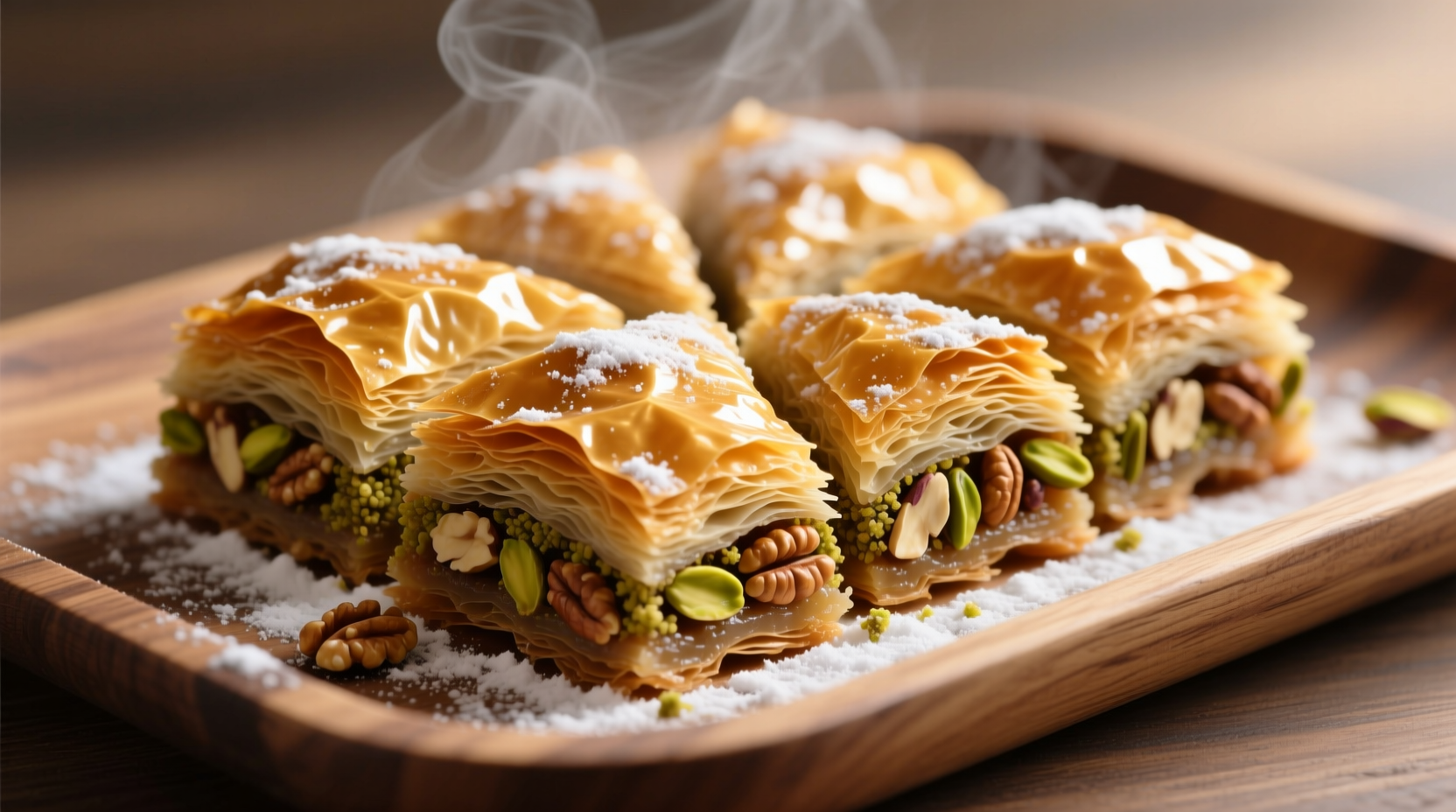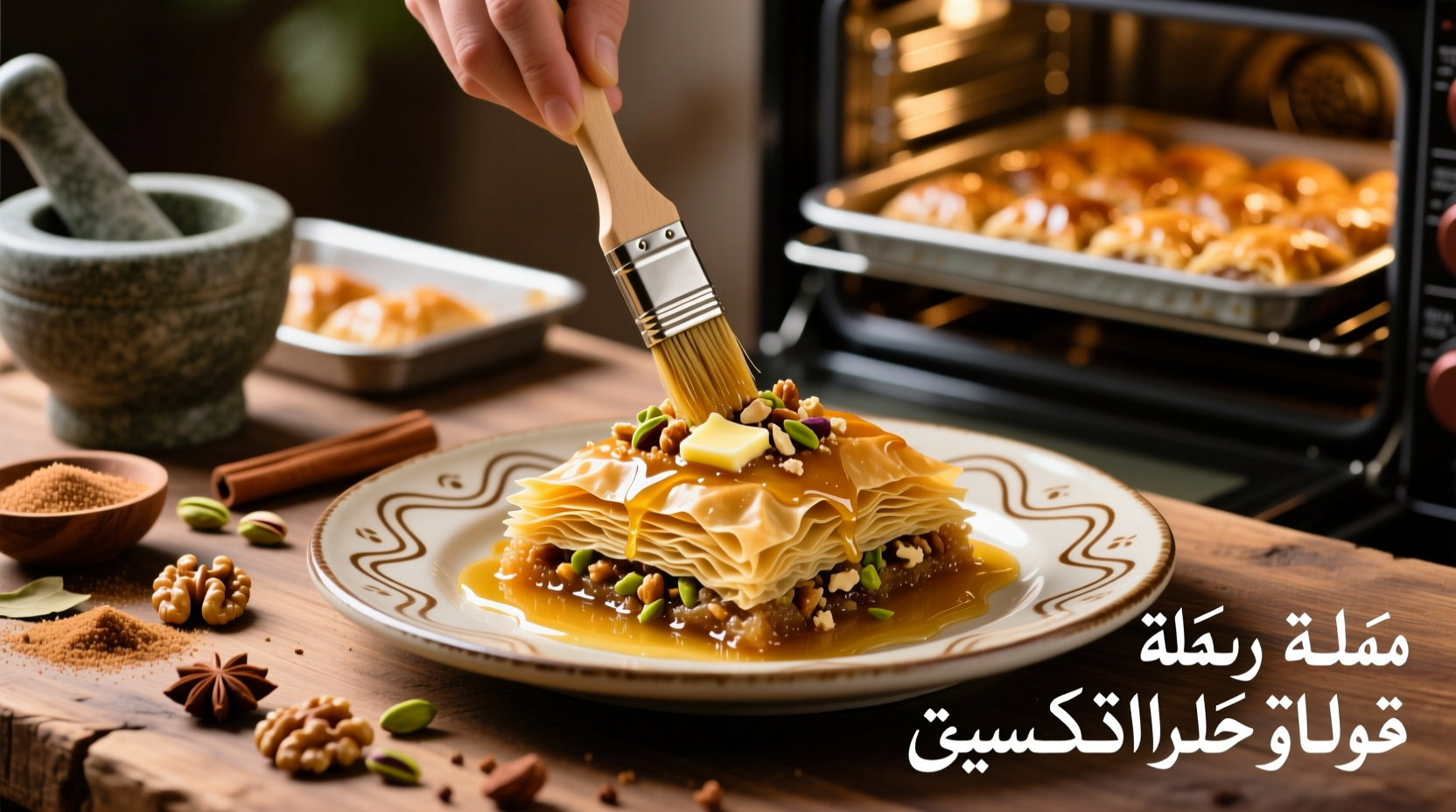Why This Baklava Recipe Works Every Time
Mastering baklava requires understanding its delicate balance of textures and temperatures. Unlike many online recipes that skip crucial details, this guide addresses the three most common failure points: dry phyllo sheets tearing, syrup absorption issues, and uneven baking. With origins tracing back to the 8th century Ottoman Empire, authentic baklava preparation follows specific techniques perfected over centuries of spice trade routes across the Mediterranean.
| Historical Baklava Evolution | Key Development | Modern Application |
|---|---|---|
| 8th Century | First recorded in Kitab al-Tabikh cookbook | Traditional layered structure remains unchanged |
| 15th Century | Ottoman palace kitchens standardized recipes | Precise 33-40 layer technique still used today |
| 19th Century | Sugar replaced honey in most regions | Modern syrup uses 1:1 sugar-water ratio |
Essential Baklava Ingredients Explained
Quality ingredients make the difference between mediocre and exceptional baklava. Unlike quick-fix recipes, authentic preparation requires specific components:
- Phyllo dough - Fresh, not frozen (thawed overnight), 18-20" sheets for proper layering
- Nut filling - 2 cups finely chopped walnuts or pistachios (never pre-ground)
- Clarified butter - 1 cup unsalted, melted (regular butter causes sogginess)
- Syrup base - 2 cups sugar, 1 cup water, 1 lemon wedge, 1 cinnamon stick

Equipment Checklist for Success
Gather these tools before starting to avoid mid-recipe interruptions:
- 9x13 inch metal baking pan (glass retains too much moisture)
- Pastry brush with natural bristles (synthetic melts from butter heat)
- Sharp chef's knife for pre-baking cuts
- Candy thermometer for syrup temperature
- Damp kitchen towel for covering phyllo
Step-by-Step Baklava Preparation
Follow this precise sequence for flawless results. Total preparation time: 45 minutes. Baking time: 50-55 minutes. Cooling time: 4 hours minimum.
Phyllo Handling Technique
Keep phyllo covered with a damp towel at all times. Work with one sheet at a time, brushing each layer with 1-2 tablespoons clarified butter. Stack first 8 sheets, then add 1 cup nut mixture. Repeat layering pattern: 4 phyllo sheets + nut mixture until final 8 sheets top the pan. The critical ratio is 33 total layers for proper flakiness.
Cutting Before Baking
Use a sharp knife to cut diamond shapes through all layers before baking. This prevents tearing during post-bake cutting. Make diagonal cuts at 1.5-inch intervals, creating 24-30 pieces depending on pan size. Proper pre-cutting ensures even syrup absorption.
The Perfect Syrup: Temperature Matters
Simmer sugar and water for 12 minutes until syrup reaches exactly 220°F (104°C). Add lemon and cinnamon, then cool to lukewarm. Never pour hot syrup on hot baklava - this causes sogginess. The ideal temperature differential (baked pastry at 200°F, syrup at 100°F) creates the perfect absorption rate. Pour slowly over cut pieces, allowing 15 minutes for initial soak before serving.
Storage Secrets for Maximum Freshness
Store baklava in an airtight container at room temperature. Properly made baklava actually improves over 48 hours as flavors meld. For extended freshness:
- Layer with parchment paper between tiers
- Include a silica gel packet to absorb excess moisture
- Consume within 14 days for peak quality
- Freeze individual portions for up to 3 months
Troubleshooting Common Baklava Problems
Even experienced bakers encounter issues. Here's how to fix them:
| Problem | Immediate Fix | Prevention for Next Time |
|---|---|---|
| Soggy bottom layers | Reduce syrup by 25% for remaining pieces | Ensure baking pan is metal, not glass |
| Dry, crumbly texture | Brush additional syrup on serving plate | Verify syrup reached 220°F before cooling |
| Torn phyllo sheets | Press torn edges together with extra butter | Work in humidity-controlled environment |
Regional Variations Worth Trying
While Istanbul-style baklava remains most popular, these authentic regional adaptations offer unique flavors:
- Gaziantep baklava (Turkey) - Uses only pistachios with 40 layers
- Beirut baklava (Lebanon) - Includes orange blossom water in syrup
- Aleppo baklava (Syria) - Features double nut layers with cinnamon
- Athens baklava (Greece) - Served with vanilla ice cream











 浙公网安备
33010002000092号
浙公网安备
33010002000092号 浙B2-20120091-4
浙B2-20120091-4